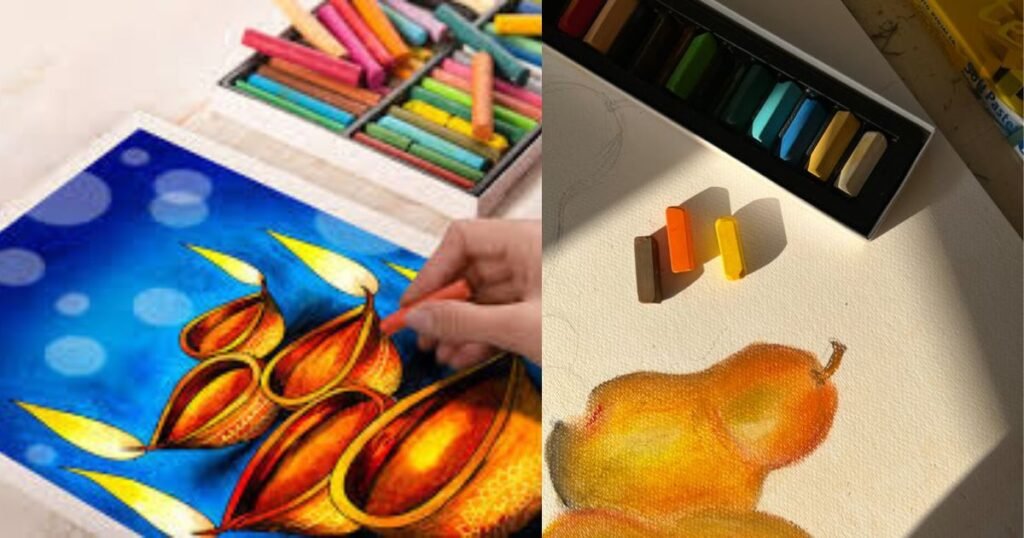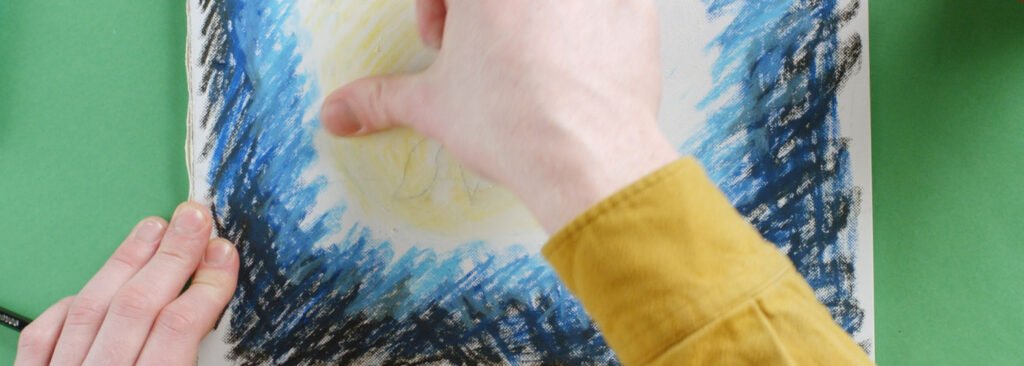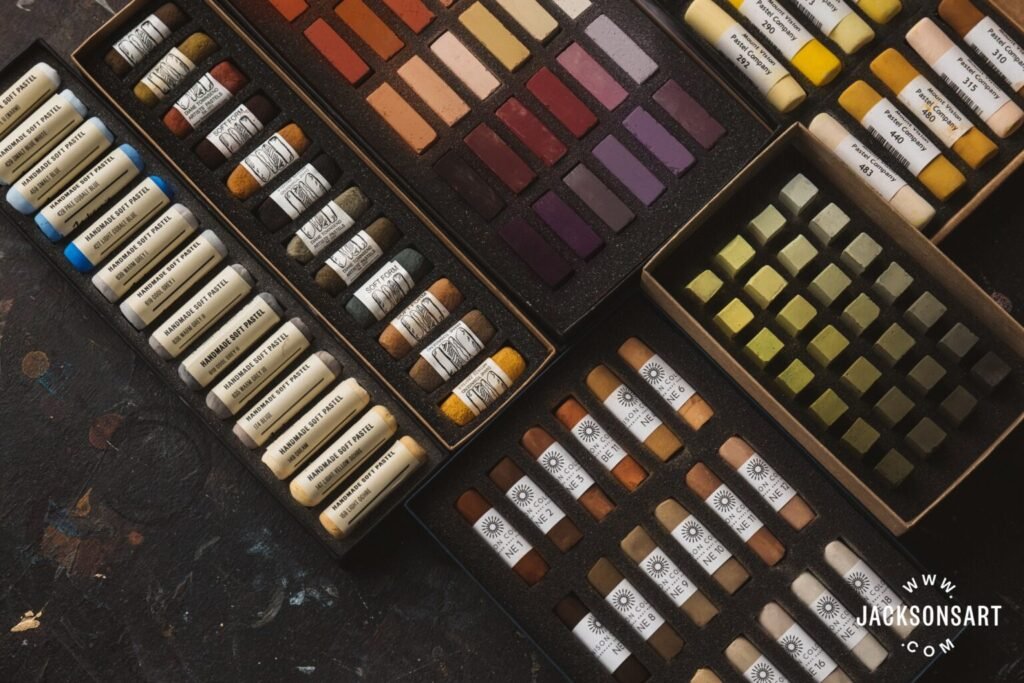Introduction to Soft Pastels and Oil Pastels
When it comes to creating art, the choice of medium plays a crucial role in bringing your vision to life. For those who love working with vibrant colors and rich textures, soft pastels and oil pastels offer a world of possibilities. Each medium has its unique characteristics, advantages, and disadvantages.
In this article, we will delve into the vibrant world of soft pastels and oil pastels, exploring their differences, techniques, and the pros and cons of each. By the end, you will have a better understanding of which medium will best suit your artistic style and bring your artwork to life.
Differences between Soft Pastels and Oil Pastels
While both soft pastels and oil pastels are used to create stunning works of art, they differ significantly in their composition and application. Soft pastels are made from pure pigment, mixed with a binder to form a stick.
They are known for their velvety texture and vibrant colors. On the other hand, oil pastels are made from a mixture of pigment, wax, and oil. This combination gives oil pastels a creamy consistency that can be easily blended and layered.
Soft pastels are dry and powdery, which allows for delicate and subtle blending techniques. They can be smudged, layered, and blended with ease. Oil pastels, on the other hand, have a more buttery consistency that glides smoothly across the surface. They can be used to create bold and expressive strokes, and their unique texture allows for impasto effects.

By Copyright © https://www.rangcanvas.in/post/oil-paste-guide
Pros and Cons of Using Soft Pastels
Soft pastels have several advantages that make them a popular choice among artists. One of the main advantages is their vibrant and intense colors. Soft pastels contain a high concentration of pigment, which allows for rich and saturated hues.
Additionally, soft pastels can be easily blended and layered, enabling artists to achieve a wide range of effects and create subtle transitions between colors.
However, there are also some drawbacks to using soft pastels. One of the main challenges is their fragility. Soft pastels are delicate and can break easily, making them prone to crumbling.
Another disadvantage is the need for fixatives to protect the finished artwork. Without fixatives, soft pastels can smudge and lose their vibrancy over time.
Lastly, soft pastels can be a messy medium to work with, as the powdery texture tends to create dust particles that can be difficult to control.
Pros and Cons of Using Oil Pastels
Oil pastels offer their own set of advantages and disadvantages. One of the main benefits of using oil pastels is their versatility. They can be used on a variety of surfaces, including canvas, paper, and even glass. Oil pastels are also known for their durability and resistance to fading.
Unlike soft pastels, oil pastels do not require fixatives, as they dry to a permanent finish.
Another advantage of oil pastels is their ability to create texture. The creamy consistency of oil pastels allows artists to build up layers and add depth to their artwork.
Oil pastels can also be easily blended using a brush or a blending tool, making it possible to achieve smooth gradients and seamless transitions.
However, oil pastels also have their downsides. One of the main challenges is their drying time. Oil pastels can take a long time to dry, which can be frustrating for artists who prefer to work quickly.
Additionally, oil pastels can be difficult to control, especially for those who are used to working with other mediums. They require a different approach and technique to achieve the desired results.
Techniques for Using Soft Pastels
Soft pastels offer a wide range of techniques that allow artists to create stunning effects and capture the essence of their subject.
One popular technique is the “dry” technique, which involves using the pastels directly on the surface without the use of any additional mediums. This technique allows for the creation of delicate and soft textures.
Another technique is the “wet” technique, which involves using a wet brush or a blending tool to blend and smudge the pastels on the surface.
This technique can create smooth gradients and transitions between colors.
Additionally, artists can experiment with layering and building up the colors to create depth and dimension in their artwork.
Techniques for Using Oil Pastels
Oil pastels offer a range of techniques that allow artists to explore their creativity and create unique artworks.
One technique is the “scumbling” technique, which involves applying thin layers of color on top of each other to create a textured effect. This technique is especially effective when trying to create a sense of depth and volume.
Another technique is the “sgraffito” technique, which involves scratching into the surface of the oil pastel to reveal the underlying layers or create intricate patterns.
This technique can add a level of detail and interest to the artwork. Additionally, artists can experiment with blending and layering the oil pastels to create smooth gradients and transitions.

By Copyright © https://myreeves.com/en/tips-tricks/soft-pastels-for-beginners/
Choosing the Right Medium for Your Artwork
Choosing the right medium for your artwork depends on your artistic style, preferences, and the effect you want to achieve.
Soft pastels are ideal for artists who love working with vibrant colors and enjoy the process of blending and layering. They are perfect for creating soft and dreamy landscapes, still life, and portraits.
On the other hand, oil pastels are a great choice for artists who prefer working with bold and expressive strokes.
They are perfect for creating textured and impasto effects, and they offer a wide range of colors and shades. Oil pastels are often used in abstract art, as well as in creating vibrant and energetic landscapes.
Examples of Famous Artists Who Use Soft Pastels
Soft pastels have been used by many famous artists throughout history to create breathtaking artworks. One such artist is Edgar Degas, known for his stunning pastel drawings of dancers and ballerinas.
Degas’ delicate and ethereal works showcase the versatility and beauty of soft pastels.
Another famous artist who has mastered the art of soft pastels is Mary Cassatt.
Cassatt’s pastel portraits are known for their soft and luminous quality, capturing the essence of her subjects with remarkable sensitivity. Her pastel works are a testament to the expressive power of this medium.
Examples of Famous Artists Who Use Oil Pastels
Oil pastels have also attracted the attention of many renowned artists who have explored the possibilities of this medium.
One such artist is Jean-Michel Basquiat, whose vibrant and expressive artworks have made a lasting impact on the art world. Basquiat’s bold and energetic strokes are a testament to the versatility of oil pastels.
Another famous artist who has embraced oil pastels is Wolf Kahn. Kahn’s landscapes are characterized by their vibrant colors and expressive brushwork.
His use of oil pastels allows him to capture the essence of nature and create stunning scenes that come to life on the canvas.

By Copyright © https://www.jacksonsart.com/blog/2021/06/01/soft-pastel-for-beginners-what-you-need-to-get-started/
Conclusion: Which Medium is Right for You?
In conclusion, both soft pastels and oil pastels offer unique and exciting possibilities for artists. Soft pastels are known for their vibrant colors and delicate blending techniques, while oil pastels offer bold and expressive strokes.
Choosing the right medium ultimately depends on your artistic style, preferences, and the effect you want to achieve. Whether you choose soft pastels or oil pastels, both mediums will allow you to bring your art to life in vibrant and captivating ways. So go ahead, explore the world of pastels, and let your creativity flourish.
